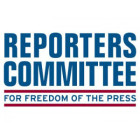
Two Cities, Two Approaches to Gun Control
|
By Yunjiao Amy Li and Eric Ferkenhoff
Headlines from Dallas and Chicago over the past few days seem to underscore that the debate over gun rights, following the Trayvon Martin killing, is far from settled. In Dallas, there was this: A gun range in nearby Lewisville is prepping a program to host children’s parties for those as young as 8 to enjoy cake, ice cream and some shooting. It’s a very “Texas” thing to do, they say, and Eagle Gun Range is just an example of the state’s proud stance on gun rights. According to Jame Kunke, the tourism director for city of Lewisville, a tiny town west of Dallas, locals have largely endorsed the opening of Eagle Gun Range. “Maybe it’s because this is Texas, but the idea of gun ownership goes back a long time and there’s a high demand,” said Kunke, 45.








